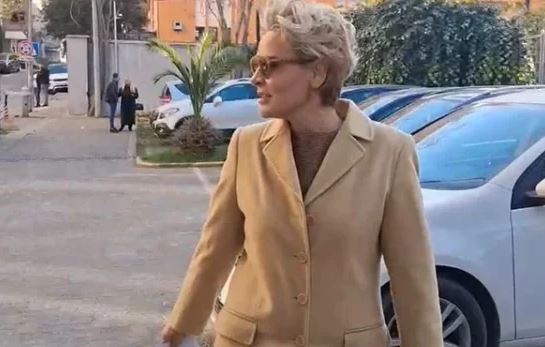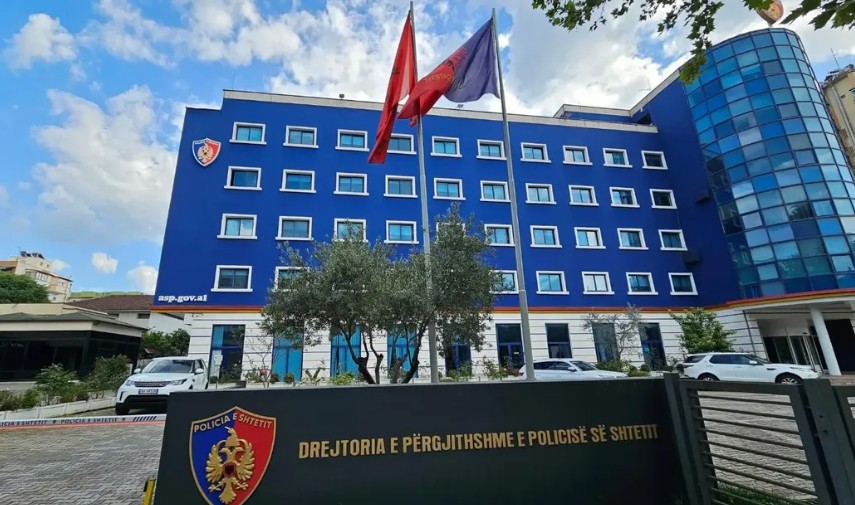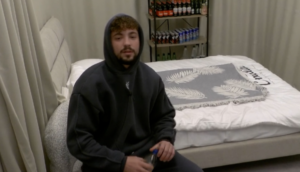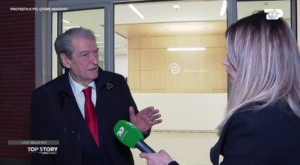Gripi Spanjolli 1918, fotot që tregojnë atë që po ndodh edhe sot në Botë
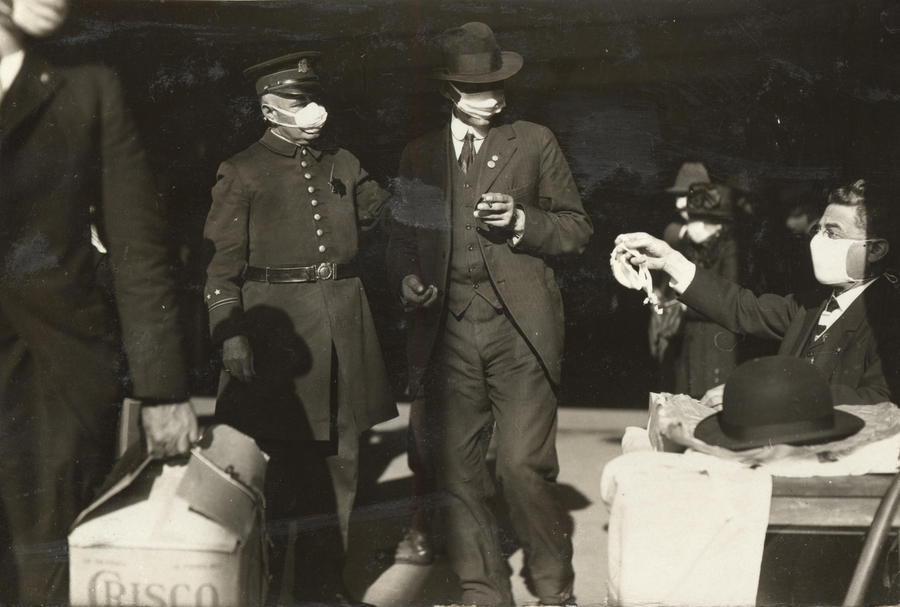
Epidemia e Gripit Spanjoll vlerësohet nga historianët si një nga më të rëndat që ka kaluar njerëzimi. Gjatë një viti, gripi i mistershëm u përhapë në gjithë botën dhe infektoi 500 milionë njerëz. Numri i viktimave llogaritet 50 milionë.
Vdekshmëria e Gripit Spanjoll ishte mjaft e lartë dhe në bazë të të dhënave, koronavirusi COVID19 cilësohet si një virus që do të shkaktojë shumë më pak dëme njerëzore në botë.
Por paniku që ka përjetuar njerëzimi në gati 100 vite duket i njëjtë. Fotot më poshtë tregojnë qytete të ndryshme të botës në karantinë nga Gripi Spanjoll dhe qytetarë me maska. Duket se pas gati 100 vitesh shumë pak gjëra kanë ndryshuar në përballjen e njerëzimit me viruset.
KJ





epa08342660 (FILE) A handout picture provided by the California State Library shows a policeman adjusting a citizen’s flu mask, in San Francisco, California, USA, in 1918 (reissued 04 April 2020). Experts are trying to understand how the novel coronavirus COVID-19 disease pandemic might play out by making comparisons to past outbreaks like SARS, MERS and swine flu, media reported. Some experts are reportedly likening the coronavirus outbreak to the 1918 Spanish flu (H1N1 influenza virus) pandemic saying that strict social distancing and other measures slowed the disease spread and decreased mortality rates. The novel coronavirus Covid-19 infectious disease, which is caused by the SARS-CoV-2 virus, is steadily increasing world-wide, with more than 100 countries affected and over 1,000,000 confirmed cases. EPA/Hamilton Henry Dobbin / CALIFORNIA STATE LIBRARY HANDOUT MANDATORY CREDIT: CALIFORNIA STATE LIBRARY HANDOUT EDITORIAL USE ONLY/NO SALES

epa08342657 (FILE) A handout picture provided by the California State Library shows a policeman wearing a flu mask talking to a couple, in San Francisco, California, USA, in 1918 (reissued 04 April 2020). Experts are trying to understand how the novel coronavirus COVID-19 disease pandemic might play out by making comparisons to past outbreaks like SARS, MERS and swine flu, media reported. Some experts are reportedly likening the coronavirus outbreak to the 1918 Spanish flu (H1N1 influenza virus) pandemic saying that strict social distancing and other measures slowed the disease spread and decreased mortality rates. The novel coronavirus Covid-19 infectious disease, which is caused by the SARS-CoV-2 virus, is steadily increasing world-wide, with more than 100 countries affected and over 1,000,000 confirmed cases. EPA/Hamilton Henry Dobbin / CALIFORNIA STATE LIBRARY HANDOUT MANDATORY CREDIT: CALIFORNIA STATE LIBRARY HANDOUT EDITORIAL USE ONLY/NO SALES

epa08342658 (FILE) A handout picture provided by the California State Library shows a policeman wearing a flu mask leading two men by their arms in front of the Ferry Building in San Francisco, California, USA, in 1918 (reissued 04 April 2020). Experts are trying to understand how the novel coronavirus COVID-19 disease pandemic might play out by making comparisons to past outbreaks like SARS, MERS and swine flu, media reported. Some experts are reportedly likening the coronavirus outbreak to the 1918 Spanish flu (H1N1 influenza virus) pandemic saying that strict social distancing and other measures slowed the disease spread and decreased mortality rates. The novel coronavirus Covid-19 infectious disease, which is caused by the SARS-CoV-2 virus, is steadily increasing world-wide, with more than 100 countries affected and over 1,000,000 confirmed cases. EPA/Hamilton Henry Dobbin / CALIFORNIA STATE LIBRARY HANDOUT MANDATORY CREDIT: CALIFORNIA STATE LIBRARY HANDOUT EDITORIAL USE ONLY/NO SALES

epa08342659 (FILE) A handout picture provided by the California State Library shows people waiting in line to get flu masks at Montgomery St in San Francisco, California, USA, in 1918 (reissued 04 April 2020). Experts are trying to understand how the novel coronavirus COVID-19 disease pandemic might play out by making comparisons to past outbreaks like SARS, MERS and swine flu, media reported. Some experts are reportedly likening the coronavirus outbreak to the 1918 Spanish flu (H1N1 influenza virus) pandemic saying that strict social distancing and other measures slowed the disease spread and decreased mortality rates. The novel coronavirus Covid-19 infectious disease, which is caused by the SARS-CoV-2 virus, is steadily increasing world-wide, with more than 100 countries affected and over 1,000,000 confirmed cases. EPA/Hamilton Henry Dobbin / CALIFORNIA STATE LIBRARY HANDOUT MANDATORY CREDIT: CALIFORNIA STATE LIBRARY HANDOUT EDITORIAL USE ONLY/NO SALES

epa08342654 (FILE) A handout picture provided by the California State Library shows a man wearing flu mask sitting at a sidewalk table attempting to give a mask to passersby, in San Francisco, California, USA, in 1918 (reissued 04 April 2020). Experts are trying to understand how the novel coronavirus COVID-19 disease pandemic might play out by making comparisons to past outbreaks like SARS, MERS and swine flu, media reported. Some experts are reportedly likening the coronavirus outbreak to the 1918 Spanish flu (H1N1 influenza virus) pandemic saying that strict social distancing and other measures slowed the disease spread and decreased mortality rates. The novel coronavirus Covid-19 infectious disease, which is caused by the SARS-CoV-2 virus, is steadily increasing world-wide, with more than 100 countries affected and over 1,000,000 confirmed cases. EPA/Hamilton Henry Dobbin / CALIFORNIA STATE LIBRARY HANDOUT MANDATORY CREDIT: CALIFORNIA STATE LIBRARY HANDOUT EDITORIAL USE ONLY/NO SALES

epa08342655 (FILE) A handout picture provided by the California State Library shows a group of six women members of the War Camp Community Committee sitting in a room making flu masks, in San Francisco, California, USA, in 1918 (reissued 04 April 2020). Experts are trying to understand how the novel coronavirus COVID-19 disease pandemic might play out by making comparisons to past outbreaks like SARS, MERS and swine flu, media reported. Some experts are reportedly likening the coronavirus outbreak to the 1918 Spanish flu (H1N1 influenza virus) pandemic saying that strict social distancing and other measures slowed the disease spread and decreased mortality rates. The novel coronavirus Covid-19 infectious disease, which is caused by the SARS-CoV-2 virus, is steadily increasing world-wide, with more than 100 countries affected and over 1,000,000 confirmed cases. EPA/Hamilton Henry Dobbin / CALIFORNIA STATE LIBRARY HANDOUT MANDATORY CREDIT: CALIFORNIA STATE LIBRARY HANDOUT EDITORIAL USE ONLY/NO SALES

epa08342656 (FILE) A handout picture provided by the California State Library shows a group portrait of eleven people at a counter, on which signs reading ‘information’ and ‘Request for Service’, at an undisclosed location in San Francisco, California, USA, in 1918 (reissued 04 April 2020). Experts are trying to understand how the novel coronavirus COVID-19 disease pandemic might play out by making comparisons to past outbreaks like SARS, MERS and swine flu, media reported. Some experts are reportedly likening the coronavirus outbreak to the 1918 Spanish flu (H1N1 influenza virus) pandemic saying that strict social distancing and other measures slowed the disease spread and decreased mortality rates. The novel coronavirus Covid-19 infectious disease, which is caused by the SARS-CoV-2 virus, is steadily increasing world-wide, with more than 100 countries affected and over 1,000,000 confirmed cases. EPA/Hamilton Henry Dobbin / CALIFORNIA STATE LIBRARY HANDOUT MANDATORY CREDIT: CALIFORNIA STATE LIBRARY HANDOUT EDITORIAL USE ONLY/NO SALES
 KOHA JONË SONDAZH
KOHA JONË SONDAZH











